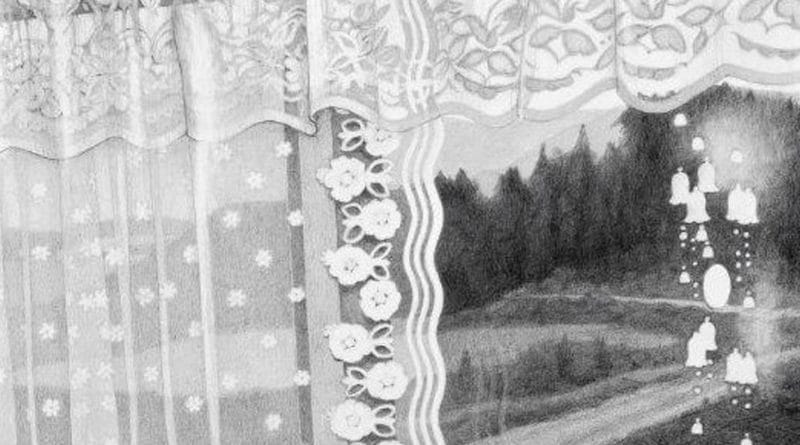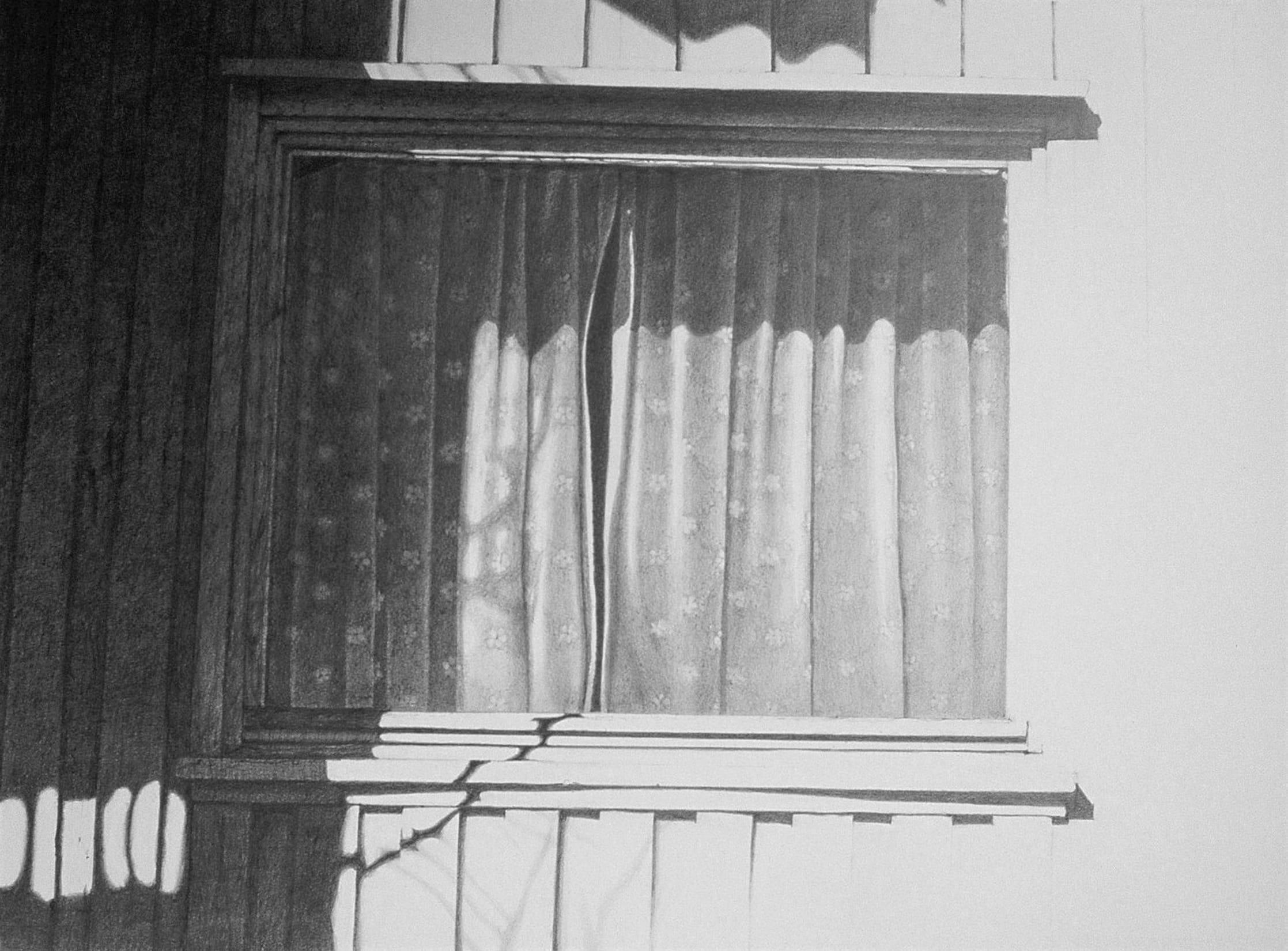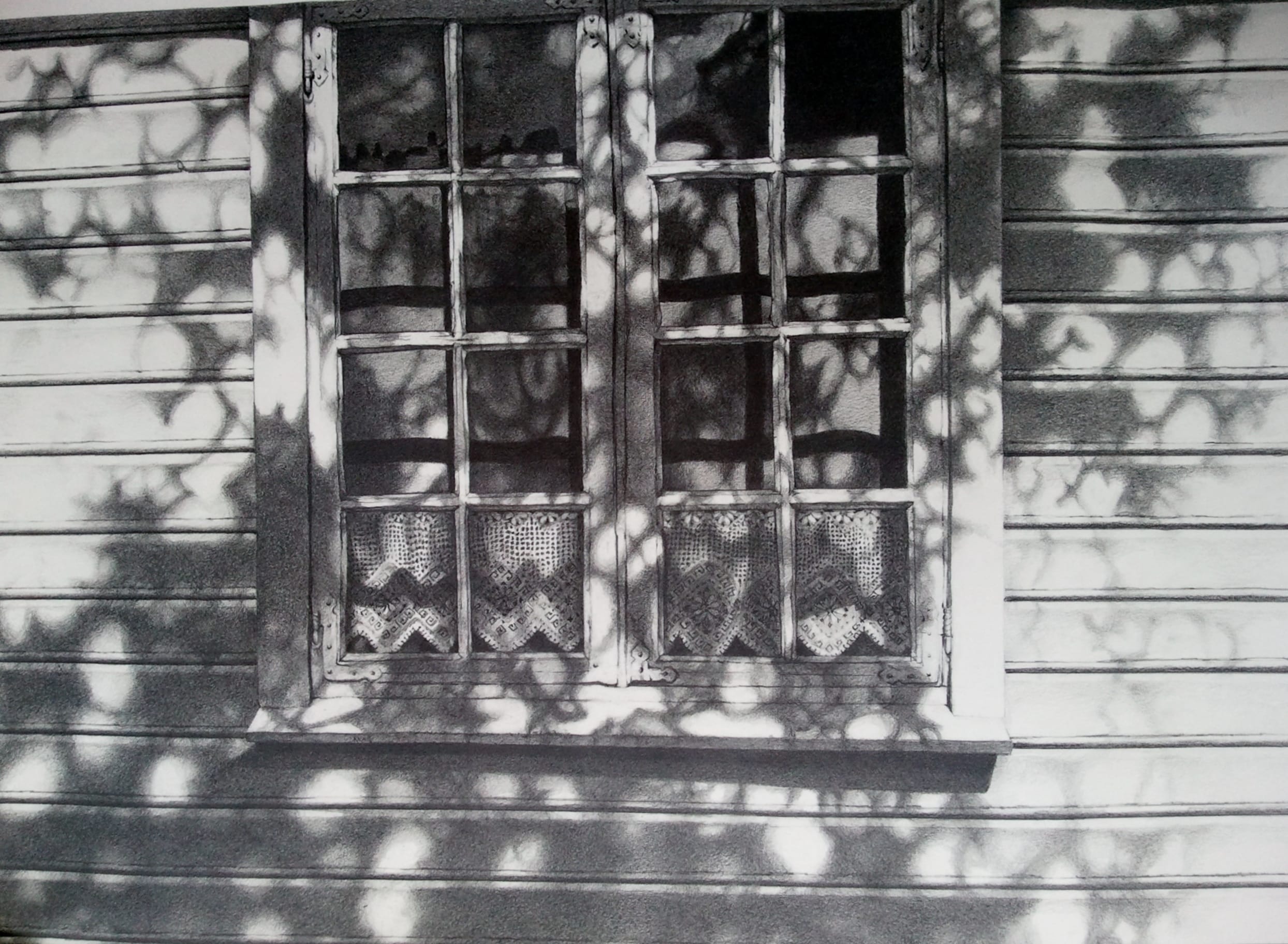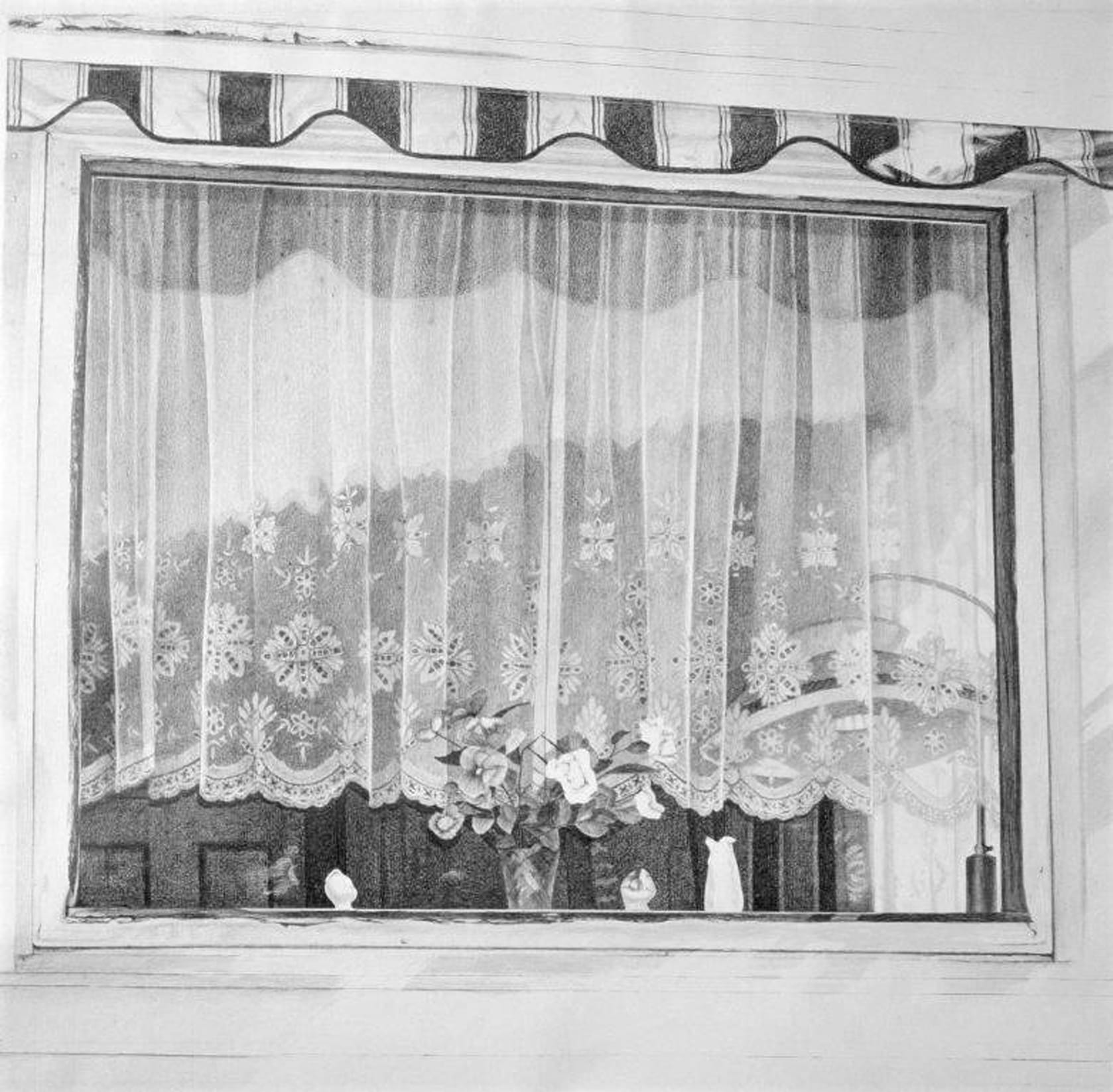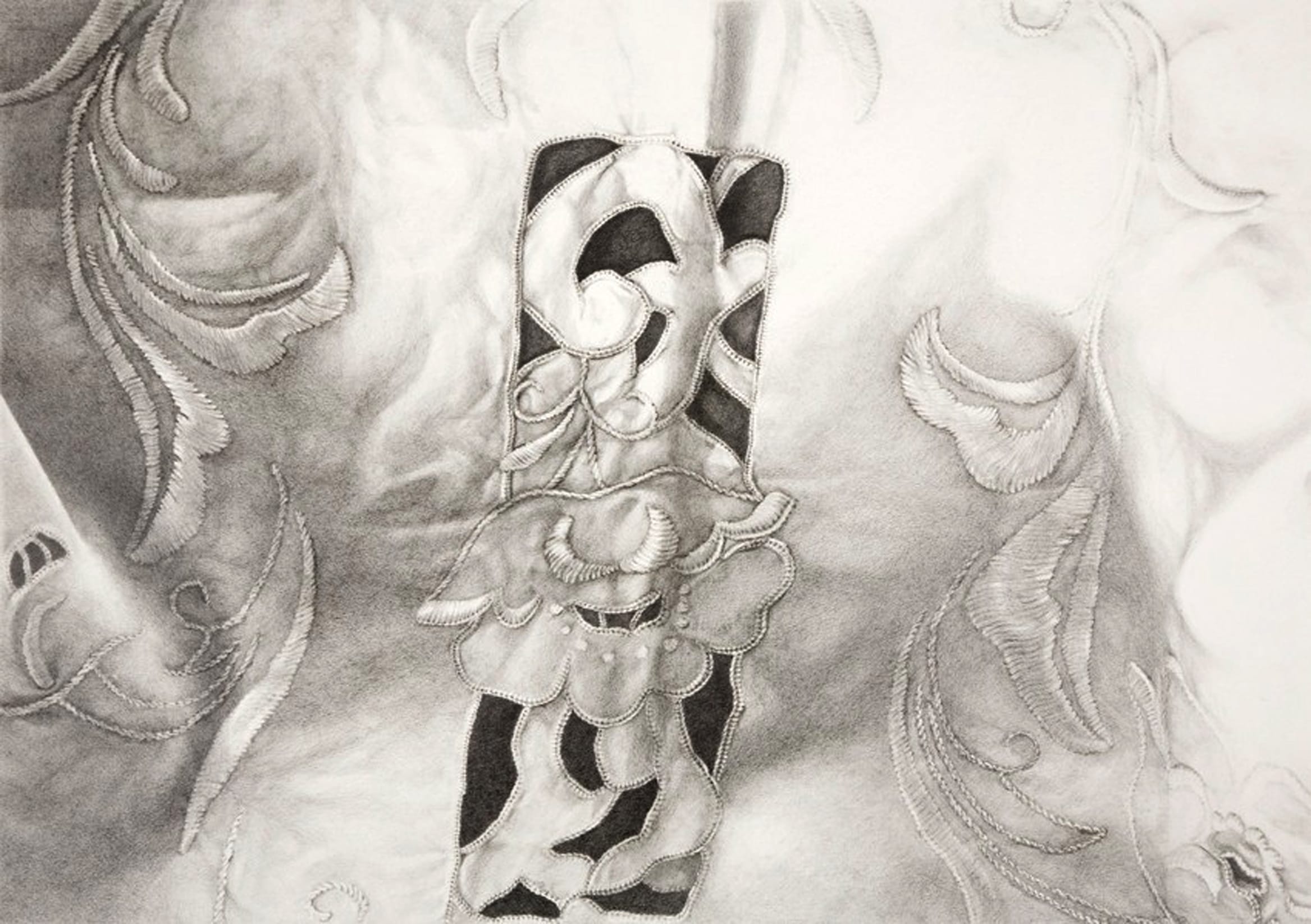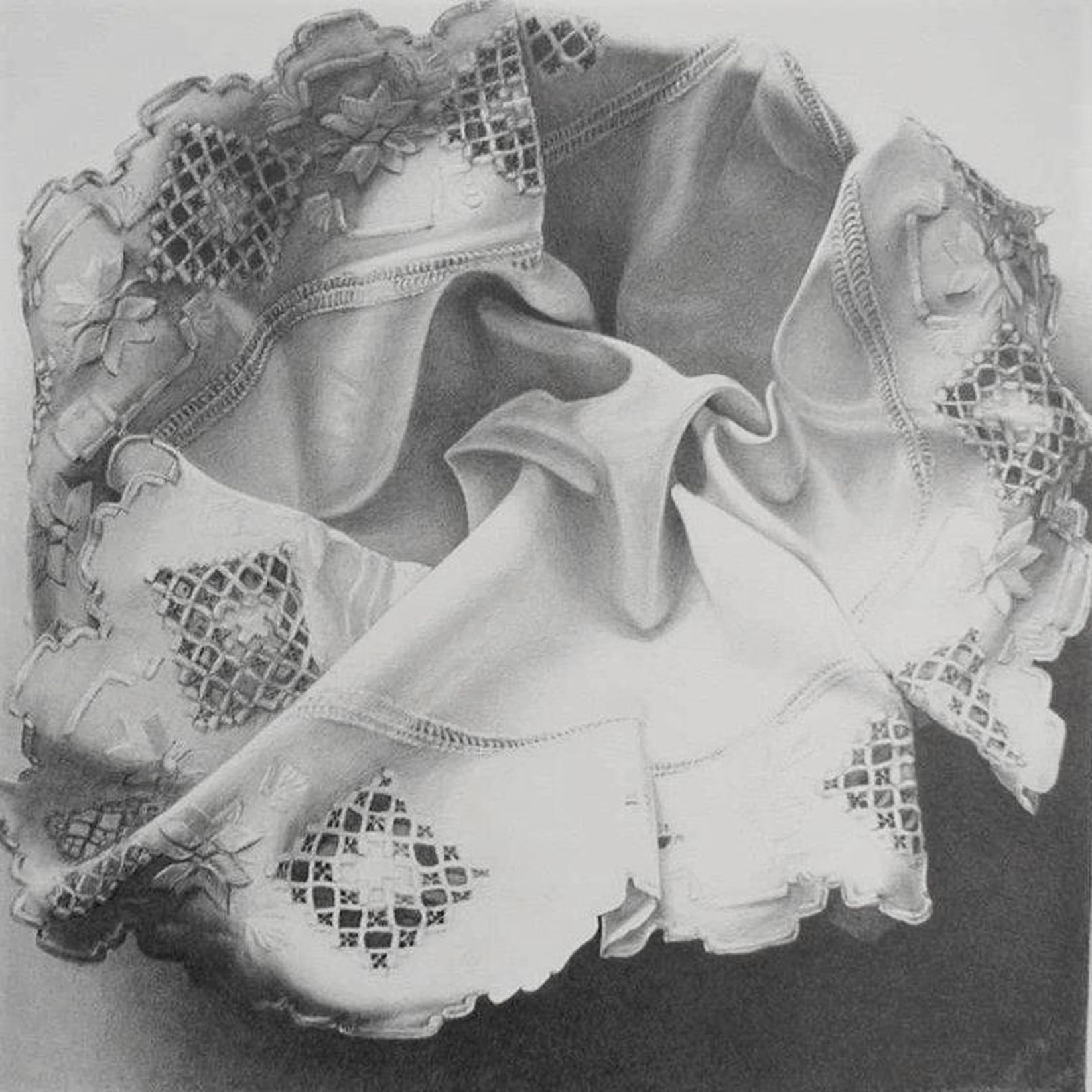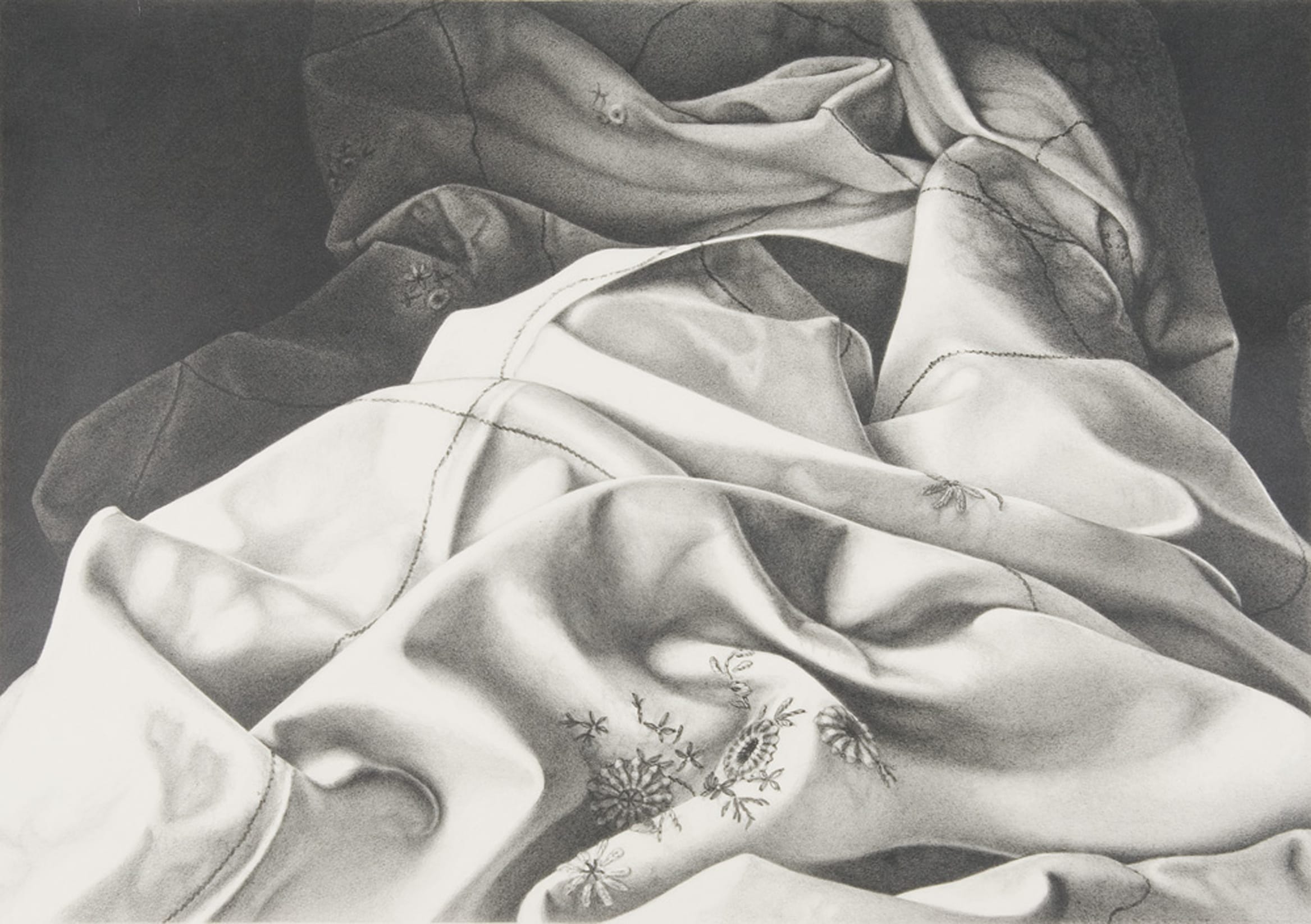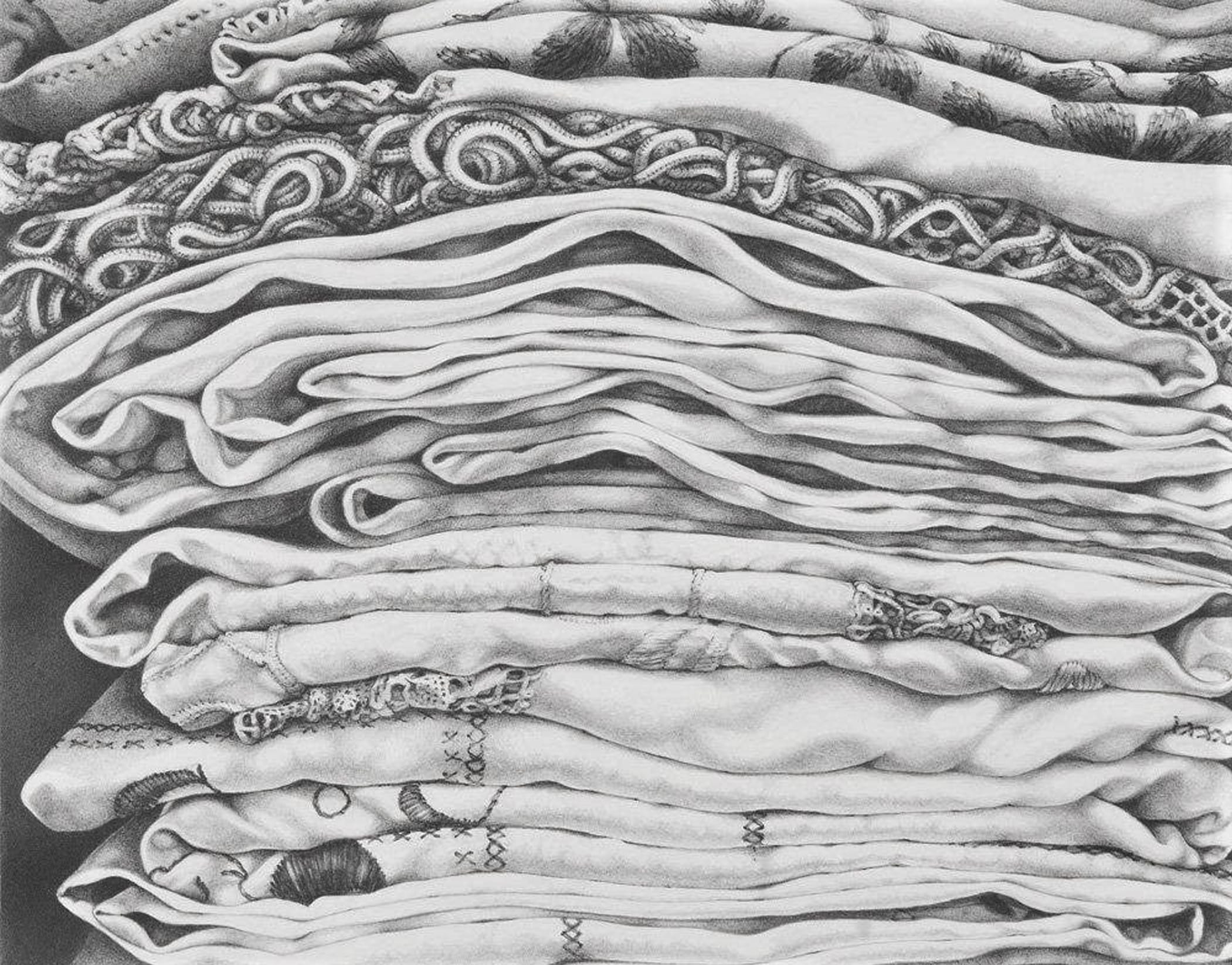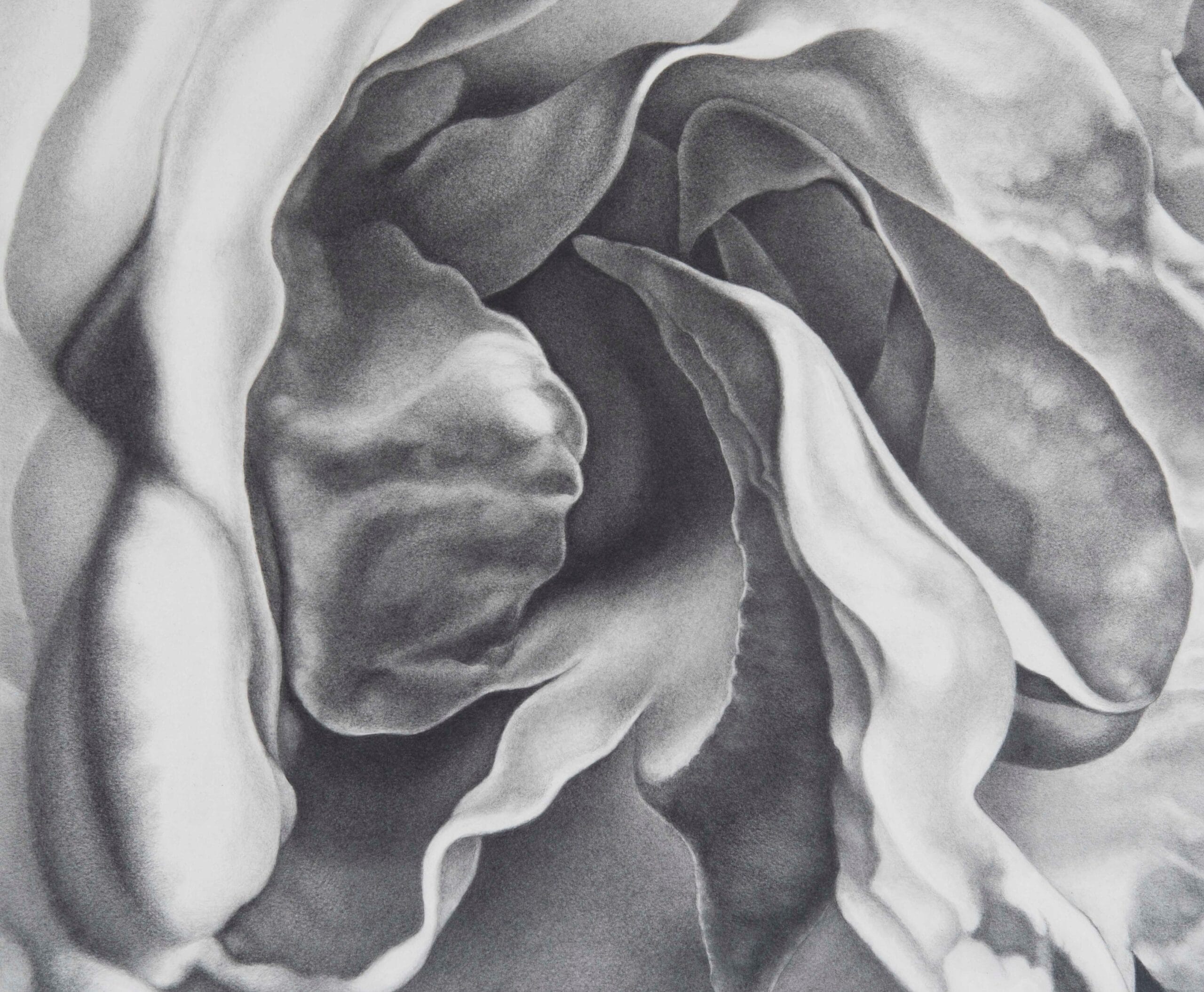PENCIL FOLDS – windows and their curtains
Walking on a busy street, or running while trying to get to work in time; daily, we pass by a million windows, with their curtains drawn or slightly open on dimly lit interiors.
We are so used to them, as an ordinary element of a cityscape, we don’t even pay attention. However, their shapes, dimensions and the objects on the window sill tell us a lot about a country’s culture, social relationships and people’s private lives.
Passing by one of Snøfrid Hunsbedt Eiene’s windows is a once in a lifetime experience.
You can’t help but stop and look, hooked by a special atmosphere.
Ph. Credit Snøfrid Hunsbedt Eiene
Her subjects, taken from everyday life, convey feelings of familiarity and seem to be speaking directly to our memories.
In this series “Forlatte Hus”, the artist portrays abandoned houses found in her hometown.
“I went up to the houses, took some photos and drew the windows with their flowers, plants and curtains. The window represents a closed void, waiting to be unveiled. “
These images are surprising for their surreal sense of stillness where time is caught in an instant.
The curtain is a thin membrane, the delicate shades of grey suggesting the fabric’s veiled softness. It represents the edge between outside and inside or a veil between outer and inner world, the present and the time of memories.
Snøfrid draws with a light touch and masters her medium to deliver the essence and poetic meaning of her subjects.
The curtains swaying slightly moved by the sea breeze, a pile of scented sheets stacked in a closet or an embroidery. Objects that communicate, charged with sensuality and allegories by the use of a refined technique.
The precise and calculate pencil drawing become extremely expressive. There is no mistake, the lines seem to be kept under control, however, the result is not cold or static. This is possible thanks to years of experience mastering one’s working tools.
It seems like pencils and lines would emerge directly from the artist’s hands like her natural way of communication. They are made out of air, time, breath and perhaps the artist’s fingers are made of graphite, after all.
Ph. Credit Snøfrid Hunsbedt Eiene
The drawing, a translation of visual stimuli through the use of lines, becomes immediate, it seems like Snøfrid sees the world out there as an abstraction of graphic lines.
Details to observe, that forces us to look in-depth, fragments juxtaposed to merge areas of light and shadow from which forms emerge.
Ph. Credit Snøfrid Hunsbedt Eiene
“I model with pencils, bringing out shadows and light to obtain a three-dimensional drawing. I have used Saunders Waterford 300 mg as support, pencils 2B and 4B to draw and erasers. This paper has a texture that matches the materiality of the motifs. My hands have become addicted to this paper for everything I draw.”
The extended time of making a drawing, layering and composing lines, is close and similar to the time of the textiles, which are built thread by thread on the loom. One could spend hours observing the surface of an embroidery, discovering the trends and directions of disappeared gestures. There is an indissoluble connection between the technique used and the structure that emerges in the fabrics drawn by Hunsbedt Eiene.
EMBROIDERY
Grown-up in South Norway, since she was a child, the artist was surrounded by her mother hand-made textiles. She was a passionate and skilled craft person: she used to weave, make embroidery as well as use crochet and knitting.
“My mother always made sure that everything in the house was in place. Embroidery was considered as a status symbol, back in those days.
The best tablecloth was always displayed on the table, whenever guests came to visit. The smallest works were placed on other tables or shelves. I’m happy I made these drawings, they brought me back to my childhood and I felt great respect for the beautiful work of our mothers and grandmothers. I would love to know where their thoughts used to wander while they were working…”
Ph. Credit Snøfrid Hunsbedt Eiene
Norway can boast a very lively textile tradition that is proudly collected and displayed in craft museums throughout the country. Each region retains its traditional pattern, visible in both embroidery and weaving.
Ph. Credit Snøfrid Hunsbedt Eiene
When the subject matter of a work of art is the interpretation of a decorative pattern, already in itself a stylized representation; the image communicates all these layers of meaning as if they were doubled: time, manual skill, precision and knowledge of one’s own culture.
Ph. Credit Snøfrid Hunsbedt Eiene
“The patterns of these embroideries are a part of a long tradition of surface design that can be traced back to the past and comes from different places. These designs have evolved over the centuries, while people travelled and brought with them their cultural traditions, adapting them to the new places.
I love to work with my hands. Craft is tightly linked to time. Things require time and I dedicate many hours to every drawing so that thought and feelings can penetrate the cloth. Is it like using one’s labour to suspend the passing of time while I, like my ancestor, leave the mind to wander.
I realized that this project on embroidery wasn’t just part of a common history, but it has been a journey to discover myself, through the process.”
THE FOLD
The fold, a small introverted space that is found, on a bigger scale, in the landscape and the universe. A shape that acquires unlimited metaphorical meanings. The pleats of Eiene’s fabrics trigger imagination, suggesting and hiding.
Ph. Credit Snøfrid Hunsbedt Eiene
“When I took out the tablecloths neatly placed in wardrobes and drawers, pleats have formed. I have reinforced them, instead of tidying them nicely. I took the fabrics out and placed them on the floor a bit randomly and then I took some pictures. I have always been impressed by the drapery in the heavy marble figures from art history, and not least in the beautiful paintings. The folds tell a story in the context of other folds, infinitely, layer upon layer. I find them fascinating. What can they say about what lies inside the shadows? Is there anything exciting waiting to be revealed?”
Ph. Credit Snøfrid Hunsbedt Eiene
“It is clear how my works are influenced by my upbringing, something that I have become increasingly aware of while working with these family memories.”
In this series, the works are composed following a three phases process. First, the fabrics are arranged in random piles. Several photographs are taken but one is chosen: the one that our artist perceives closest to her feeling, to her truth.
These works act as a magnifying glass on reality, this is perhaps the reason why the sense of time also expands, freezing in the suspended present of Snøfrid ‘s works.
Emotions are only one step away from these evocative simulacra.
Ph. Credit Snøfrid Hunsbedt Eiene
It must have taken a long time to complete this series; a slow time. The viewer is called to carefully read the surfaces in concentration, by immersing himself in the movement suggested by the lines.
Arnfinn Bø-Rygg, in an article “Stoffets folder og tankens” about Eiene’s work, explains that by following the lines of the drawing, its lights and shadows, depths and cavities become tactile.
“We feel, we touch the curves of the drawing with our eyes, but also with the muscles of the fingers. The hand turns inwards and then backwards, just like in a fold.”
Ph. Credit Snøfrid Hunsbedt Eiene
The artist’s attraction to these “dramatic folds” develops in her latest series of works.
Rose petals close-up, the image cut to became almost abstract. The softness of these flowers seems to elude nature’s rules, playing with the mimesis between different materials. Once more, the drapery comes to the surface, this time as a petal.
These works were recently displayed at Hå gamle prestegard during the artist’s Solo exhibition entitled “ROSER:FOLDER”. You can discover about this show on her website alongside plenty of beautiful images and interesting articles.
Ph. Credit Snøfrid Hunsbedt Eiene
